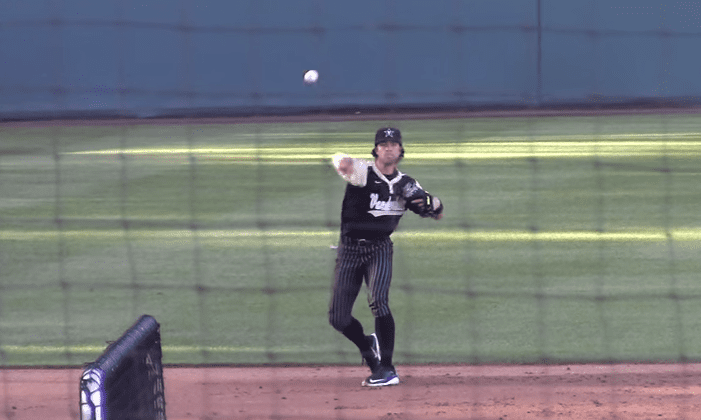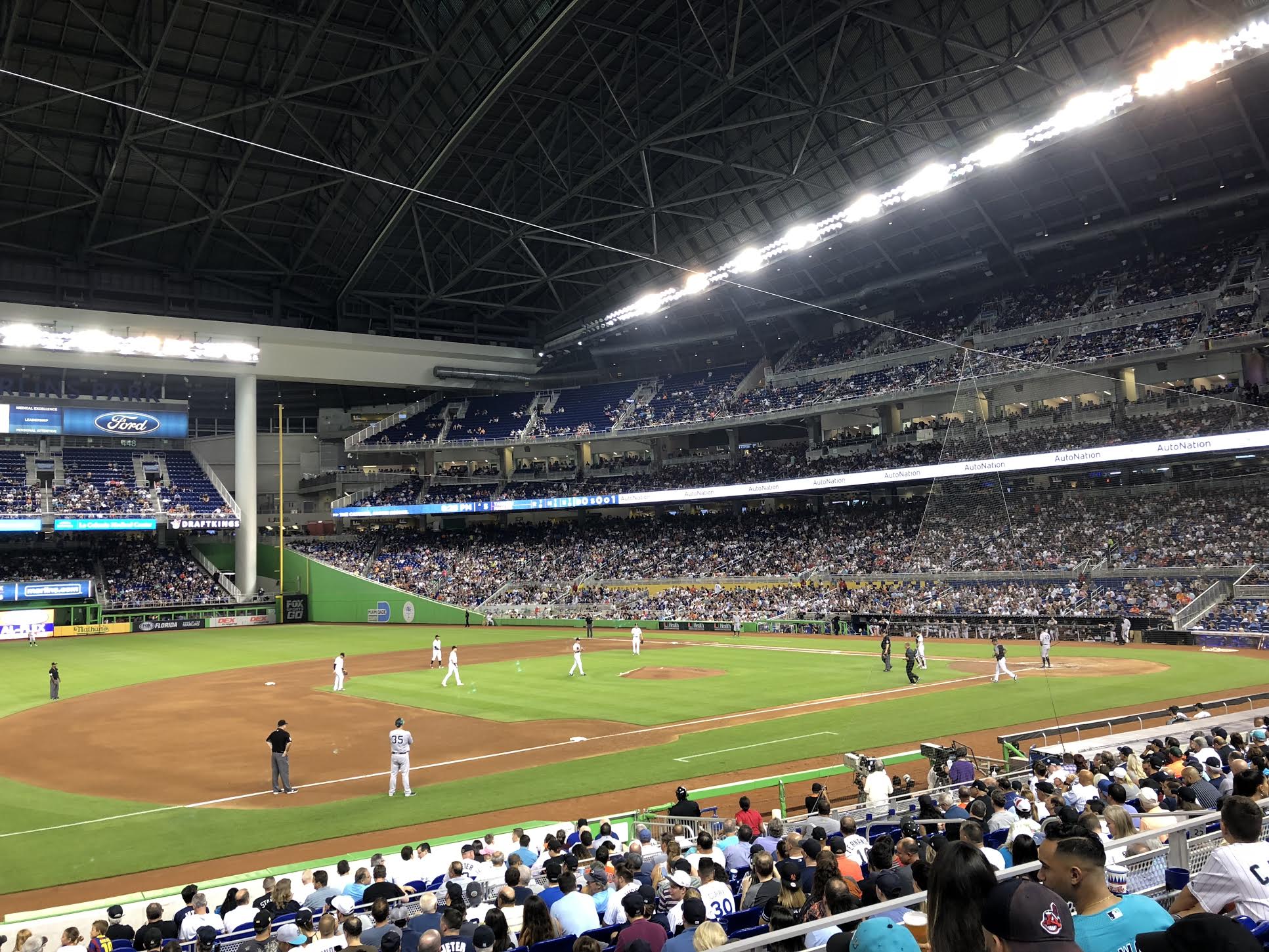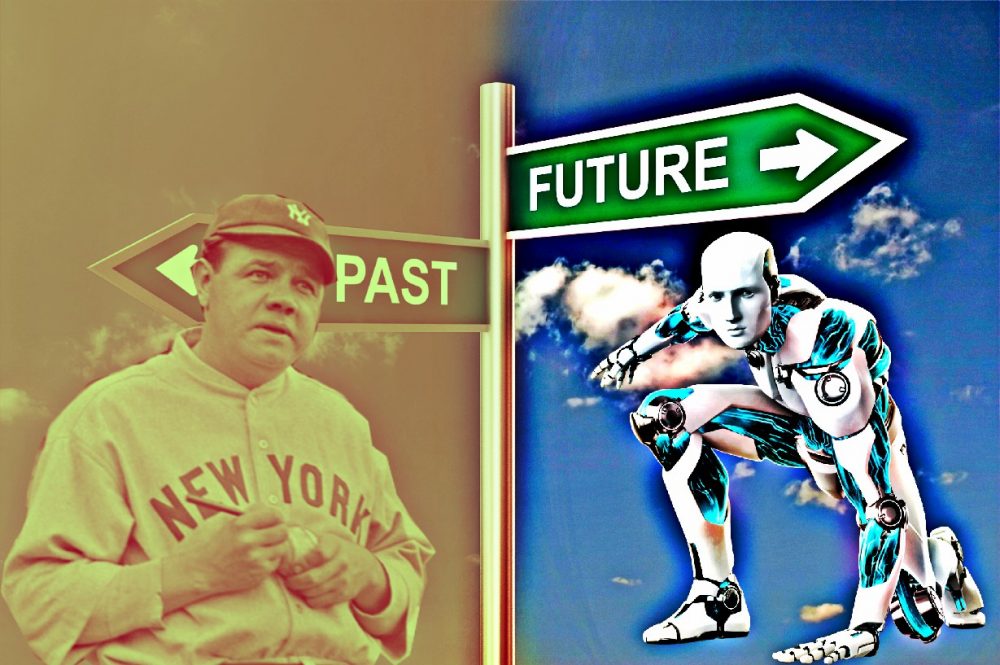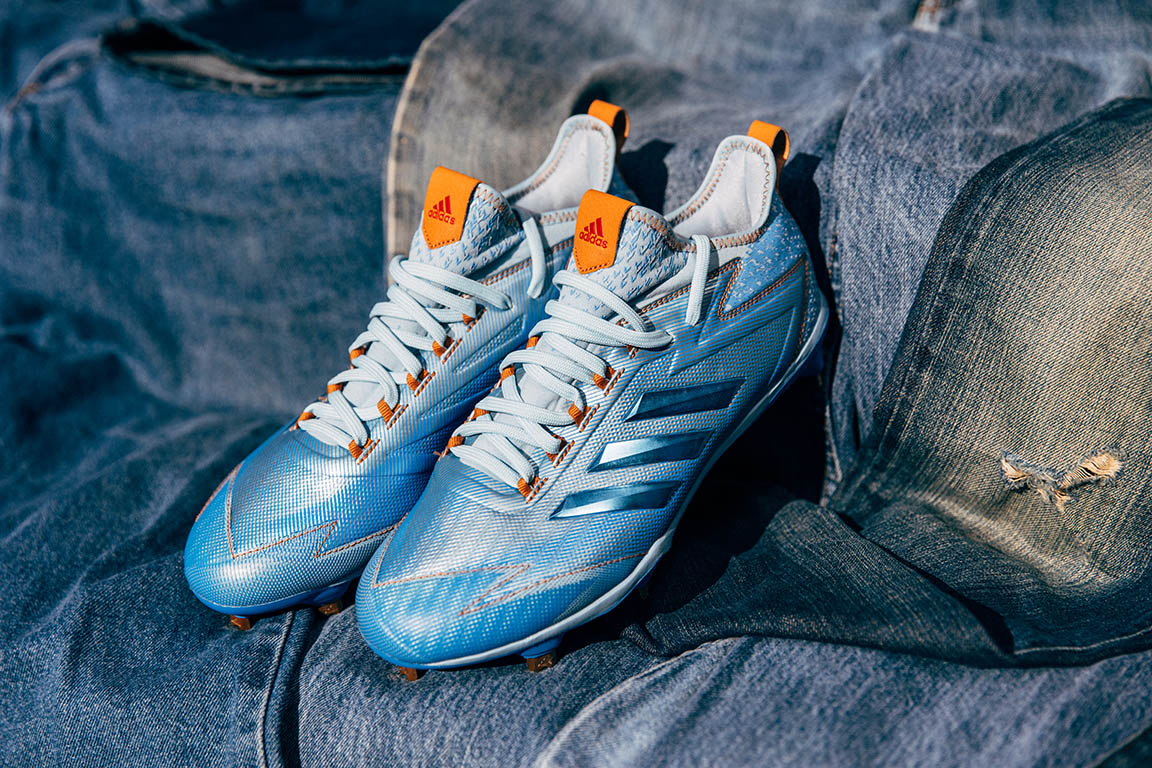Unlike virtually every other sport I can think of, the MLB does their draft in the middle of their playing season. Monday, June 8th was the start of the first round in 2015, and with many clubs playing while the draft was underway, it’s tough to imagine the MLB Draft ever getting the kind of attention that the NFL Draft garners, unless it’s moved. Speaking of moving, the draft was held in Secaucus New Jersey. I guess Newark was booked solid with a chemical waste disposal conference. 2015 marks the only draft in history where three shortstops were taken with the first three picks.
Round 1
- Arizona Diamondbacks: Dansby Swanson (SS): Vanderbilt
James Dansby Swanson was originally signed out of high school by the Colorado Rockies in 2012 in the 38th round. Instead of signing on he opted to go to Vanderbilt, where he struggled mightily as a freshman after breaking his foot. He played all of 11 games and had a batting average of .188. Fast forward to 2014 and Swanson was the MOP (Most Outstanding Player) of the College World Series hitting .323 while playing stellar defense at second base. He moved to short stop in 2015 and has kept up the batting and fielding efforts that won him the MOP last year. As a top pick, and given his several years in college, there will be an expectation for Swanson to play with the big club soon. Given everything we know, he should be able to rise to the challenge.
- Houston Astros (compensation for not signing 2014 No. 1 overall pick Brady Aiken): Alex Bregman (SS): LSU
Bregman and Swanson were teammates on Team USA last summer, and it’s hard not to draw comparisons. While Swanson is seen as a complete player, Bregman has some limitations in the field that are compensated by more abilities when at the dish. Often compared to Boston Red Sox’ Dustin Pedroia, the thought would be that on a team with great defensive players, he’d be better suited to move to second base. Bregman was also originally drafted in 2012 when he went in the 29th round to the Boston Red Sox, but opted not to sign and attend LSU instead. Unlike Swanson, the transition to the college level was a prosperous one from the start as Bregman earned Freshman of the Year honors in 2013, batting .316 in his first year. Given how accomplished a hitter he is, Bregman is expected to be with the Astros next year.
- Colorado Rockies: Brendan Rodgers (SS): Lake Mary (Fla.) HS
The Rockies were the third team in a row to select a shortstop. Unlike the previous two teams, the Rockies took a bit of a project player that will need a few years coming out of high school to hone his craft. However, Brendan Rodgers also appears to have a much higher ceiling than either of the other players taken ahead of him. There is a rare combination of defensive ability mixed with power hitting that you rarely see from a shortstop. Rodgers’ abilities are so unique that MLB Pipeline’s draft board had Rodgers as the player with the highest ceiling in the entire draft. The Rockies may just have drafted Troy Tulowitzki’s replacement.
- Texas Rangers: Dillon Tate (P): UC Santa Barbara
There was a bit of a debate about the best pitcher in the draft this year. Tate was the early front-runner, but faded in his performance as the college season wore on. However, in a young arm that sort of fatigue is to be expected. This is the third year in a row the Rangers have used their first pick on a pitcher, and the game plan has been to build a championship team through a high-powered starting pitching rotation. Unlike many other names on the list, Tate wasn’t even drafted coming out of high school. He’s built his own name through power pitching performances out of Santa Barbara. His fastball has been clocked at 97 mph.
- Houston Astros: Kyle Tucker (OF): H.B. Plant (Fla.) HS
How would you like to have two of your kids playing in the big leagues? How would you like it if they played for the same team? Houston drafted Kyle Tucker’s brother Preston in 2012 and he’s been doing well with the Astros this year. The funny thing is that, as good as Preston has been for the club, Kyle is being regarded as the better offensive talent, with one of the most natural swings in the 2015 draft. While viewed to many as a hitting machine, Tucker has solid defense with good range in the field and a solid arm, capable to gunning down base runners if the opportunity arises. He’ll need a few years in the farm system, but if they manage to both get on the field together how amazing would that be for the Tucker family to watch?
- Minnesota Twins: Tyler Jay (P): Illinois
While most of his career has been as a closer, Tyler Jay did make two starts this year for the Fighting Illini, and he’s looking every bit the part of an MLB ready pitcher. In fact, with the Twins in contention for the post season, there is thought that the club could try to use Jay this season for mid or late inning relief. The hope from scouts would be to do this sparingly as a warm up to next season, as to not shake the confidence of the young player if he does end up getting torched. He’s a small, left-handed pitcher with a power arm, which is something the Twins are short on in their system. Twins scouting director Deron Johnson has said that they see Jay as more of a starter, regardless of how (or if) he is used this season.
- Boston Red Sox: Andrew Benintendi (OF): Arkansas
Widely regarded as one of the best all-round players in the draft, there was suspicion that Benintendi could have gone much higher than seventh. I imagine the Red Sox were pleased as punch (spiked with whiskey) that he fell to them at seven. On the defensive end, Benintendi is very fast and rangy in the outfield, while he lead the college league by hitting .380 with 19 home runs on the offensive end. Andrew just happened to be a Red Sox fan growing up, particularly of Dustin Pedroia. It’s always nice to see a kid get drafted by a team that he genuinely wants to play for.
- Chicago White Sox: Carson Fulmer (P): Vanderbilt
So remember all those pitchers that were muddled together at the top of the draft class? This was one of the other guys. Also on the smaller side, Fulmer has shown the best stamina from the group, going 13 – 2 with 152 strikeouts in 114 innings of work. There are also 46 walks sprinkled in there, and he also gave up seven home runs in that time too, but he did work a lot of games. His normal pitch speed is in the low 90’s with his true heat hitting the upper 90’s. For the White Sox, the idea would be for Fulmer to work as a reliever in the near future with a thought toward being a starter in a few years.
- Chicago Cubs: Ian Happ (OF): Cincinnati
While Andrew Benintendi had the best average and the most home runs, there was a close runner up. Ian Happ posted a .369 average with 14 home runs. He also managed to sneak in 12 stolen bases and drew 49 walks. What makes Happ so intriguing is that he has the ability to be moved around on defense, able to play both the infield and the outfield. Undrafted out of high school, Happ lit up the Cape Cod league. While a potential steal of a pick, the Cubs have not selected a pitcher in the first round in over four years. Cubs senior VP of scouting Jason McLeod stood by the choice stating; “The history of the draft will tell you if the players are close in the evaluation, the college hitter usually is the way to go…They pan out.”
- Philadelphia Phillies: Cornelius Randolph (SS): Griffin (Ga.) HS
The debate may still rage on as to who the best batter in high school is, but one thing is for certain; Cornelius Randolph is in the conversation. Now let’s turn the focus to the Phillies, who have used their first round pick on a high school short stop for the second time in three years. Apparently the Phillies would like to move Randolph to left field, according to scouting director Johnny Almaraz. Regardless of how he is used, it’s tough to pass up on a kid that batted over .500 during his senior season while nabbing more than 20 steals and seven home runs. While no one really banks on stats, it shows that Randolph has a good overall skill set.
- Cincinnati Reds: Tyler Stephenson (C): Kennesaw Mountain (Ga.) HS
The 2015 MLB draft was littered with high caliber shortstops but had very few top-notch catchers. Tyler Stephenson was really the only one, and he’s one of two catchers taken in the first round. Not built like the typically catcher at 6’ 4”, the high school prospect is actually built more like a pitcher, and is apparently capable of throwing 90 mph. While very capable behind the plate, Tyler’s long arms will be tested at the next level. His offensive numbers showed good power, but there is a little concern about whether or not he can keep up at the next level.
- Miami Marlins: Josh Naylor(1B): St Joan of Arc Catholic (Ontario) SS
Anyone else think it’s kind of ironic that the Marlins were playing in Toronto, Ontario Canada the same day they pick a kid from Canada? The thing about Naylor is that there wasn’t a lot of long term results against top notch talent for you to base his success on. Enter the Team Canada tour of the Dominican Republic, where, against professional pitchers, Naylor hit five home runs in twelve games. Those numbers look very similar to fellow Canuck Brett Lawrie’s run in 2008. While rated as a second round draftee by most scouting outfits, the late push has Naylor looking at a few years in a farm system before heading out to sunny Miami. This is the highest place a Canadian player has ever been drafted.
- Tampa Bay Rays: Garrett Whitley (OF): Niskayuna (N.Y.) HS
Widely considered to be one of the athletically gifted players in high school the knock here is that Whitley has not faced high-calibre talent. Whitley is a speed guy, offensively and defensively, and could be a great leadoff man someday. He batted 356 in high school, with 15 steals in 15 attempts. He is the first player coming out of Section II high school baseball to ever be selected in the first round. Definitely a project player that will take the Rays some time to develop, but the upside on this kid has no limit.
- Atlanta Braves: Kolby Allard (P): San Clemente (Calif.) HS
The Braves have a history of taking players that are high-risk and high reward. With that in mind, Allard is a great fit. Originally pegged as a consensus top 10 pick for the draft, a back injury has kept him from playing since March of this year. If the back injury has no lingering effects, Allard could be a club ace for years to come (after some time in the farm system). If the injury has taken away from the power or precision of Allard that is a risk the Braves will have to live with.
- Milwaukee Brewers: Trent Clark (OF): Richland (Texas) HS
The Brew Crew had some immediate needs for their club, particularly in the form of pitching. In fact, the team could have used a lot of people that were ready to play in the next two years. Instead the team opted for a productive high school kid with a large upside, which is at least four years away from being able to play in the majors. If you watch Clark play you’ll notice his bat grip is more like a golf grip. With that said the kid did still hit over .550 this year, so it’s tough to argue with the results.
- New York Yankees: James Kaprielian (P): UCLA
The Yankees could use some pitching help sooner rather than later and Kaprielian is probably the most MLB ready pitcher in the draft. While none of his pitches are overly powerful, they are precise and have good movement on them. The hope would be that James could be up with the club in two years or less, and he is projected to be a #3 starter when all the dust settles. Personally, I see him being brought in as a long reliever and a flex five starter for his first year.
- Cleveland Indians: Brady Aiken (P): IMG Academy
If the name Brady Aiken sounds familiar to you from an MLB draft perspective, it’s because he was the first overall pick in 2014 by the Houston Astros. After the draft, some medical history and a lengthy contract standoff ensued that eventually saw Aiken decline to sign his offer and take his talents to the IMG Academy. The idea was another stellar year would have him in better standing to cash in this year. In the spring Aiken suffered a UCL tear, forcing him to undergo Tommy John surgery. The Indians are taking a chance on him coming back to form. Aiken may have already missed out as the gap in signing bonuses is expected to be about $5.5 million.
- San Francisco Giants: Phil Bickford (P): College of Southern Nevada
Do the Giants really need more pitchers? Apparently they do, and this kid can throw a fastball at 98 mph. Originally the 10th overall selection by the Toronto Blue Jays in 2013, Bickford opted to go and work on his game in college. The debate here is whether or not this guy is a starter. His best work has been as a reliever thus far, but if one team can figure out how to use this guy, it’s the Giants.
- Pittsburgh Pirates: Kevin Newman (SS): Arizona
Newman is supposed to have one of the purest swings in the draft coming out of college. He’s won the Cape Cod League batting title two years in a row, something that has never before been done. While his defense is adequate, he might be moved over to second base, but it will be his bat that gives him a place in the majors in the next few seasons.
- Oakland Athletics: Richie Martin (SS): Florida
This pick is a little puzzling to me. With a body of work, this extensive you’d have wanted to see more from Martin at the plate. Now in the Cape Cod League this past year, he looked really good at the plate, but you didn’t see that same production when he was playing at Florida. If he can keep getting stronger and more consistent at the plate, he has some upside.
- Kansas City Royals: Ashe Russell (P): Cathedral (Ind.) HS
As the top high school pitching prospect coming into the draft, the Royals didn’t stretch too much picking up Russell in this spot. What really strikes you with this kid is his command of two pitches at the high school level. His frame is also something you like to see in a pitcher, and it adds to how tough it is for hitters to pick up the pitch with that tricky arm slot.
- Detroit Tigers: Beau Burrows (P): Weatherford (Texas) HS
Probably one of the most diversified pitchers at the high school level, Burrows as a two-seam, four-seam, curve, and a change-up at his disposal. Yet he can still throw with power as he fires a fastball in at around 94 mph. The argument here is that Burrows projects much better as a reliever than as a starter. It would be tough to justify taking a reliever this early in the draft though.
- St. Louis Cardinals: Nick Plummer (OF): Brother Rice (Mich.) HS
Plummer is most definitely an offensive prospect as there are a lot of questions about his fielding. His throwing isn’t overly impressive either. A springtime slump had him drop down the board a bit, but he did manage to maintain a .520 average and 32 stolen bases.
- Los Angeles Dodgers: Walker Buehler (P): Vanderbilt
Buehler? Buehler? Sorry, channeling my best Ben Stein there. While a very competent pitcher in college, the knock on Buehler is that he is more or less a finished product. He is someone that could even come up and play a bit this year in a pinch, and many scouts figured he’d go in the top 15 as a result of the sterling command he has. Putting aside how honed his pitches are, he is only 160lbs, so there are some durability concerns as well.
- Baltimore Orioles: D.J. Stewart (OF): Florida State
One thing about Stewart is that he has an amazing eye for pitches. He led the college ranks with 69 walks. Now if only he had more speed. At 6 feet and 230lbs his range in the field is a bit of a problem regardless of a .500 batting average and hitting 15 home runs. Based on his stance, there are concerns about his power ability at the next level, but he comes into a position group that doesn’t have a lot of depth in the Orioles organization.
- Los Angeles Angels: Taylor Ward (C): Fresno State
As a player ranked 99th overall by the MLB Pipeline, this is a pretty big stretch for the Angels. Were we ranking on defense alone he may have gone much higher as his arm behind the plate is a rocket. He did show some more offensive potential at Fresno State this year, but there is a worry it can’t carry over into the major leagues. If he can find his swing at the next level he can start, if not he’s likely a career backup.
Compensation Picks
When teams make qualifying offers to players that opt to sign elsewhere, teams are awarded a compensation pick. The team that signs the player forfeits its first pick, unless it has one of the first 11 picks in the first round, in which case it forfeits its second pick. Teams that sign multiple players with qualifying offers continue to lose their next highest draft pick.
- Colorado Rockies (lost Michael Cuddyer to NYM): Mike Nikorak (P): Stroudsburg (Pa.) HS
Here is a player that has previously flashed as the best pitcher in high school, but faded down the stretch. Nikorak has a stellar fastball with a pair of developing secondary pitches. There will be a few years of development needed for this guy, but the upside for a staff ace is there.
- Atlanta Braves (lost Ervin Santana to MIN): Michael Soroka, (P): Bishop Carroll (Alberta) HS
Two Canadians off the board in the first round? I wonder if this is a growing trend in the major leagues. This is another situation where a trip to the Dominican really helped this kid’s draft stock. In 13 innings pitched against pro level talent, Soroka didn’t allow a single run. A few years away from playing in the big leagues, he could make some noise as a starter for the Braves.
- Toronto Blue Jays (Melky Cabrera to CWS): RHP Jon Harris, Missouri State
Hitting is not in any way an issue for the Toronto Blue Jays this season, so a pitcher that could come up and play now makes a ton of sense. What makes Harris such a steal here is where he is right now. His pitches are very polished, and could easily come in as a long reliever or even as a flex starter for the Jays in the coming months.
- New York Yankees (lost David Robertson to CWS): Kyle Holder (SS): University of San Diego
For those of you keeping score at home, that is now seven shortstops taken in the first round. The retiring of Derek Jeter hasn’t left a hole in short, but it has left a lot of questions. I am in no way saying that Holder is the next Jeter (no one is), but he is as solid defensively as you could wish for. His batting leaves something to be desired, particularly in terms of consistency, but certainly as a fielder there is no doubt he can play at the next level.
- San Francisco Giants (lost Pablo Sandoval to BOS): Chris Shaw (1B) Boston College
As an all around player, Shaw is lacking in a few areas. His defense is lackluster, his batting average is lower than you’d like and he’s not exactly the most durable guy on the planet after a broken bone in his hand ended his season. But what Shaw does have is power. He led the Cape Cod league in home runs last year and can go the yard anytime he is at the plate. This is a project player to be sure.
- Pittsburgh Pirates (lost Russell Martin to TOR): Ke’Bryan Hayes (3B): Concordia Lutheran (Texas) HS
The son of former Pirate Charlie Hayes, Ke’Bryan is a guy that hits line drives and has shown defensive improvement at the hot corner this year. Hayes has to continue to work on his overall fitness to continue to grow at the next level. It will take some time to bring Hayes along into the major league system, but the team seems committed to this family.
- Kansas City Royals (lost James Shields to SD): Nolan Watson (P): Lawrence North (Ind.) HS
This is a stretch pick as Watson has committed to Vanderbilt, and with this late a selection there is a lot of concern that he’ll sign on with the club. To his credit, Watson has solid command of four different pitches. He also has a steady frame of 6’ 2” with 200lbs on him, so there is little concern about his durability.
- Detroit Tigers (lost Max Scherzer to WAS): Christin Stewart (IF): Tennessee
Appearing in 50 games for the Volunteers, Stewart hit .311 and complimented his average with good power. Last summer as a member of Team USA Stewart really stood out as a guy who could hit for average. He’s fallen so far because he offers little in the way of speed on the bases, or in the field, and has limited defensive skills.
- Los Angeles Dodgers (lost Hanley Ramirez to BOS): Kyle Funkhouser (P): Louisville
Stop for two seconds and look at how cool a last name this is for a jersey. If someone could send me a Funkhouser jersey tomorrow, I’d wear it with pride.
Funkhouser came into 2015 looking like he was a top five pitching prospect before a late season slump dropped him down the draft boards. While likely not a club ace, he could turn into a reliable number three or four starter for the Dodgers in the next two years.
36: Baltimore Orioles (lost Nelson Cruz to SEA): Ryan Mountcastle (SS): Hagerty (Fla.) HS
Not a lock to play short at the next level, but someone who can play. Mountcastle was ranked 122nd by Baseball America, so this was a stretch, but he has a huge upside. He projects better as a third baseman at the next level because of his arm strength, but his true potential is in his bat.
















